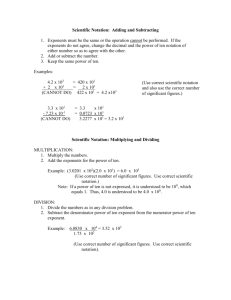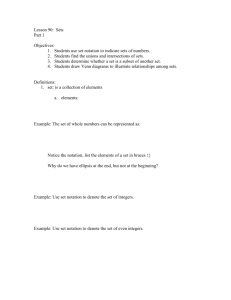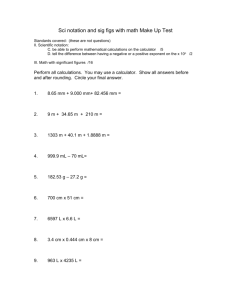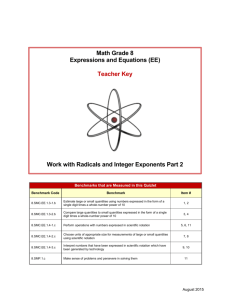scientific notation unit targets
advertisement
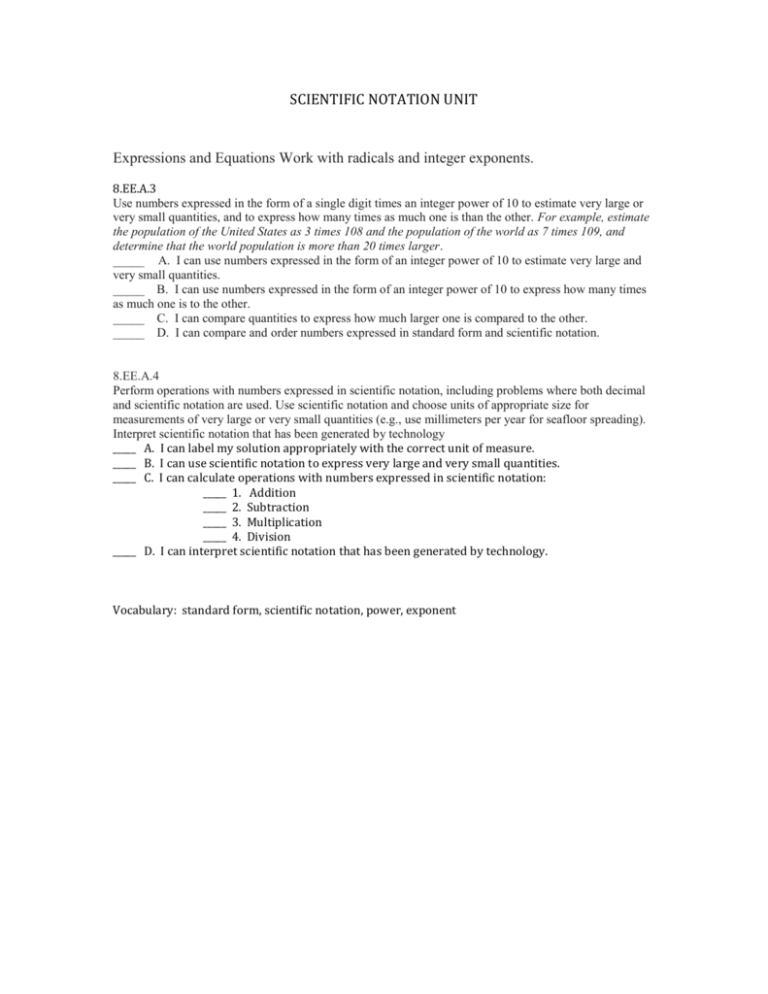
SCIENTIFIC NOTATION UNIT Expressions and Equations Work with radicals and integer exponents. 8.EE.A.3 Use numbers expressed in the form of a single digit times an integer power of 10 to estimate very large or very small quantities, and to express how many times as much one is than the other. For example, estimate the population of the United States as 3 times 108 and the population of the world as 7 times 109, and determine that the world population is more than 20 times larger. _____ A. I can use numbers expressed in the form of an integer power of 10 to estimate very large and very small quantities. _____ B. I can use numbers expressed in the form of an integer power of 10 to express how many times as much one is to the other. _____ C. I can compare quantities to express how much larger one is compared to the other. _____ D. I can compare and order numbers expressed in standard form and scientific notation. 8.EE.A.4 Perform operations with numbers expressed in scientific notation, including problems where both decimal and scientific notation are used. Use scientific notation and choose units of appropriate size for measurements of very large or very small quantities (e.g., use millimeters per year for seafloor spreading). Interpret scientific notation that has been generated by technology _____ A. I can label my solution appropriately with the correct unit of measure. _____ B. I can use scientific notation to express very large and very small quantities. _____ C. I can calculate operations with numbers expressed in scientific notation: _____ 1. Addition _____ 2. Subtraction _____ 3. Multiplication _____ 4. Division _____ D. I can interpret scientific notation that has been generated by technology. Vocabulary: standard form, scientific notation, power, exponent




